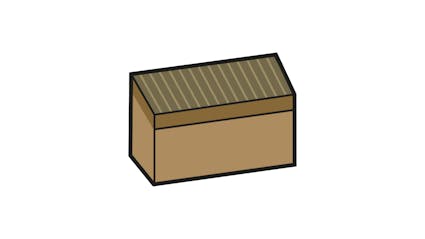912 – Well House from Appenzell Inner-Rhodes, 19th/20th Century (Reconstruction)

Keep Water Clean
Former generations were not familiar with the notion of water ecology and had less reason to than today. Drinking-water for humans and animals did, however, have to be kept free of natural contamination. People who could afford it erected a small building called in Swiss dialect a “Bronnehütte” (spring house). The building erected at the Ballenberg Open-Air Museum in 1984 (and in the meantime once renovated) is patterned after the well house from Rossberg, where it stood next to the farmhouse (911).

Building Kit
This timber frame structure is as simple as a child’s construction set: the fields between the columns are filled with planks, enclosing the well on three sides. A shed roof protects the well from contamination, rain and, above all, snow and raw winds. The water trough is a long tree trunk hollowed out by a gouging axe. Trough, well house and their location close to the multipurpose building are typical for Appenzell country.
Precious Resource
Showering, making coffee, brushing teeth, flushing toilets, washing hands – if the water supply is interrupted for a few hours in today’s world we are nonplussed. In many places only a few decades ago water still had to fetched from well to house in buckets. Water consumption bore restraint. Various buildings show how much constructional expense and how much daily work was entailed in obtaining water, for instance the cistern next to the house from La Recorne (112) or the groundwater wellhouse from Wimmis (323) with its closed well house like a small hut on the alp.
Ballenberg
Swiss Open-Air Museum
Museumsstrasse 100
CH-3858 Hofstetten bei Brienz
Opening hours Administration
3 November 2025 to 8 April 2026
From Monday to Friday
8.30 am to 11.30 am
1.30 pm to 4.30 pm
Opening hours
9 April to 1 November 2026
10 am to 5 pm daily